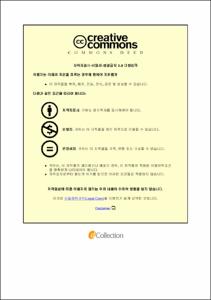The Effect of Radial Collateral Ligament Plication on Varus Stability in a Sequential Injury Model of the Lateral Elbow: A Biomechanical Study
- Alternative Title
- 주관절 외측부의 단계적 손상 모델에서 요측 측부 인대 중첩술이 내반 안정성에 미치는 영향: 생역학적 연구
- Abstract
- Background: Insufficiency of the radial collateral ligament (RCL) can lead to symptomatic minor instability of the lateral elbow (SMILE). While RCL plication showed favorable clinical outcomes in treating SMILE, its biomechanical impact on varus stability remains unclear, particularly with regards to how effectively RCL plication can restore stability compared to an intact elbow across various degrees of lateral elbow injury.
Purpose: To evaluate the impact of RCL plication on varus stability in a model of sequential lateral elbow injury under controlled varus load.
Methods: A custom-made device was used to test eight fresh-frozen cadaveric specimens (60o of elbow flexion) under a controlled varus load. We examined seven conditions: intact elbow, three sequential injury scenarios (anterior half of the common extensor origin [CEO] release, partial RCL release, and complete RCL release), and three conditions after RCL plication for the respective injury conditions. Each specimen was tested under three varus loads (gravity alone, additional 0.5 and 1 kg applied to the hand). True anteroposterior radiographs of the elbow were acquired in each condition to measure the varus angle and evaluate varus stability.
Results: RCL plication significantly reduced varus angle in cases of anterior half of the CEO and partial RCL release across all tested loads compared to their respective pre-plication states, while a significant reduction was not observed after RCL plication in the condition involving complete RCL release. At all load levels, varus angles in cases of RCL plication for anterior half of the CEO and partial RCL release showed no significant difference from intact elbow. However, RCL plication in complete RCL release exhibited a significantly larger varus angle than the intact elbow.
Conclusion: RCL plication in both anterior half of the CEO and partial RCL releases significantly improved varus stability when compared to their respective injury conditions and achieved varus stability that was comparable to that of the intact elbow. However, RCL plication in complete RCL release did not significantly improve varus stability and exhibited inferior varus stability compared to the intact elbow.
Study Design: Controlled laboratory study.
- Issued Date
- 2024
- Awarded Date
- 2024-08
- Type
- Dissertation
- Alternative Author(s)
- SO SANGPIL
- Affiliation
- 울산대학교
- Department
- 일반대학원 의학과의학전공
- Advisor
- 전인호
- Degree
- Doctor
- Publisher
- 울산대학교 일반대학원 의학과의학전공
- Language
- eng
- Rights
- 울산대학교 논문은 저작권에 의해 보호받습니다.
- Appears in Collections:
- Medicine > 2. Theses (Ph.D)
- 파일 목록
-
-
Download
 200000805784.pdf
기타 데이터 / 6.01 MB / Adobe PDF
200000805784.pdf
기타 데이터 / 6.01 MB / Adobe PDF
-
Items in Repository are protected by copyright, with all rights reserved, unless otherwise indicated.